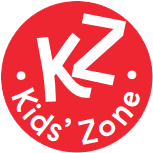HANDWRITING
"Good handwriting and the ability to write strong compositions go hand in hand. The mental process involved in handwriting are connected to other important learning functions such as storing information in memory, retrieving information, manipulating letters and linking them to sounds when spelling." - slideplayer.com
"I feel that it is vitally important for the children in my class to develop good handwriting. I love it when children are proud of how their work looks." - MV Staff
"We know that the leadership team are constantly striving for high standards of presentation in books - we too have looked on Governor Days. Their perseverance will pay off" - MV Governor
"I really like my work to look neat and tidy in my book." - MV Pupil
"I am learning to join my letters but it is tricky!" - MV Pupil
"One day when I am a bit older I will be able to join my handwriting." - MV Pupil
The art of good handwriting begins with mark making when the children are just infants. These marks, developing the use of patterns and learning about letter formation are the very foundations of a child learning to write. At Morley Victoria we consider handwriting to be one of the basic skills that we expect all of our children to have acquired in the Foundation Stage and Key Stage One.
Key Stage Two children need to understand the value and importance of having good handwriting, despite many things now being done electronically – this is still a life skill that they must master and perfect.
At varying points, the children will demonstrate that they are ready to join their handwriting – usually around Year 2. We strongly encourage this when the children are ready.
Posture
Children must be encouraged to sit with a good posture: two feet on the floor, bottom to the back of their chair and two hands on the table: one holding the pencil and the other holding the paper in place.
Children will learn to write with their dominant hand and not change.
In the Foundation Stage the children will begin with Scrimbling and Write Dance to enable their gross motor skills to develop. There will also be many other opportunities for the children to develop both their fine and their gross motor skills in the different areas of provision in and around the classroom.
The paper on which the children write should be on a slight diagonal – to the left if the child is right handed and to the right if they are left handed.
Good, positive body language and posture must be encouraged and praised at every opportunity.
Pencil Grip
Teaching the children to use a good grip is vital to ensure that they are comfortable when writing – the long term aim is for the children to be able to write neatly at speed. If the children use the incorrect grip then movement tends to come from the shoulder or the elbow and not the wrist.
A tripod grip will be encouraged using the term ‘Snappy Fingers’ consistently across school.
The children should also be taught to rest their wrist on the table whilst they write for comfort.
How we will teach handwriting at Morley Victoria
When children first learn to make marks and write, they will do so across the areas of provision in the Foundation Stage. Once the children have learned all of the individual letter sounds (which includes letter formation – taught in the correct way), Reception teachers will begin to teach the letter families in discrete handwriting lessons.
We use the 'Ground, Grass, Sky' visual aid to help children to learn how letters should be situated on a line - how tall the ascenders need to be and how far descenders need to do under ground.
Handwriting will be taught discretely across the rest school and will be taught starting with letter families, starting with ‘Curly Caterpillars’. They will progress on to learning the 'Ladder Letters' followed by the 'One Arm Robots' and finally the 'Zig-Zag Monsters' as these are the hardest.
The children will be taught to write neatly, with appropriately sized letters and spacing between words. Once the children form their letters well they need to be taught the two types of join:
The washing line join
The diagonal join
NOTE: diagonals are the hardest type of movement for a child to learn so there needs to be a lot of pattern drawing first.
Once the children have practised these, they should be able to apply this to some letters instinctively.
Handwriting is given a high profile at Morley Victoria.
Pen Licences
Our children love the challenge of trying to get their pen licence when they start in Key Stage 2. When the children have consistent, appropriately sized handwriting where there is some evidence of joining; then they will decide with their class teacher whether they are ready to take 'the test'. The children have to take their writing books to show to Mrs Wood who then sets a handwriting challenge to complete there and then. Mrs Wood uses the evidence from their books they write in everyday in class and the test to make her decision.
It might be that she feels that someone is very nearly ready but not quite yet; so she will set them a challenge and ask them to come back having done lots of work to make the improvements - the children have to demonstrate their true growth mindset in this case.
If she is happy then she will award the children with their licence. The children will receive their pen and use it from then on. The pen comes with a great responsibility to maintain this high standard as penalty points can be applied! See our very special MV Pen Licence the children receive in one of the blue boxes.



























